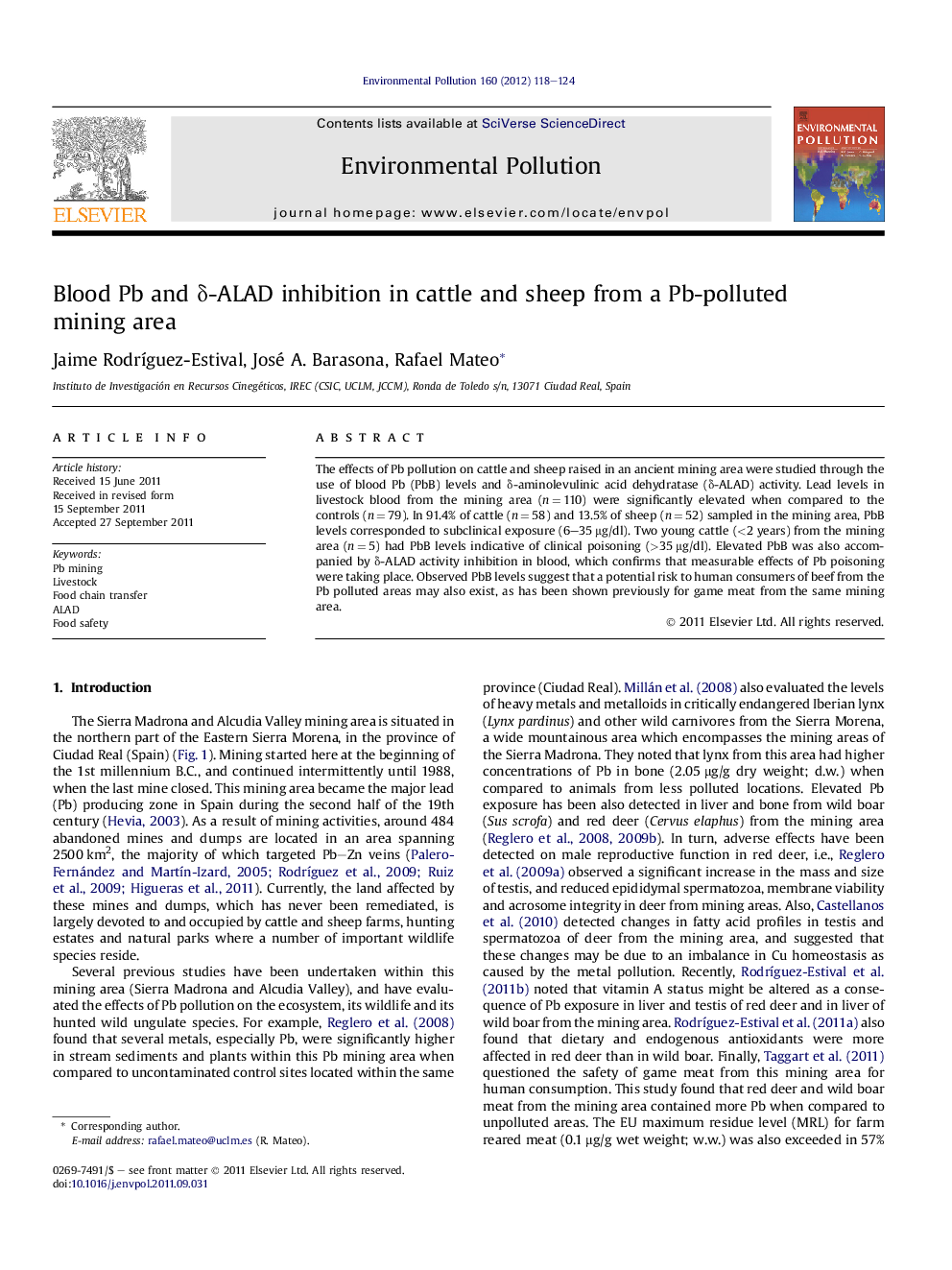| کد مقاله | کد نشریه | سال انتشار | مقاله انگلیسی | نسخه تمام متن |
|---|---|---|---|---|
| 4424692 | 1619212 | 2012 | 7 صفحه PDF | دانلود رایگان |

The effects of Pb pollution on cattle and sheep raised in an ancient mining area were studied through the use of blood Pb (PbB) levels and δ-aminolevulinic acid dehydratase (δ-ALAD) activity. Lead levels in livestock blood from the mining area (n = 110) were significantly elevated when compared to the controls (n = 79). In 91.4% of cattle (n = 58) and 13.5% of sheep (n = 52) sampled in the mining area, PbB levels corresponded to subclinical exposure (6–35 μg/dl). Two young cattle (<2 years) from the mining area (n = 5) had PbB levels indicative of clinical poisoning (>35 μg/dl). Elevated PbB was also accompanied by δ-ALAD activity inhibition in blood, which confirms that measurable effects of Pb poisoning were taking place. Observed PbB levels suggest that a potential risk to human consumers of beef from the Pb polluted areas may also exist, as has been shown previously for game meat from the same mining area.
► We studied effects of Pb pollution on livestock raised in an old mining area.
► Livestock from the mining area had higher blood Pb levels than the controls.
► Pb levels were higher in cattle than in sheep.
► Pb exposure inhibited δ-aminolevulinic acid dehydratase, especially in cattle.
► Lead uptake in livestock reared in this area poses a risk to human consumers.
Journal: Environmental Pollution - Volume 160, January 2012, Pages 118–124